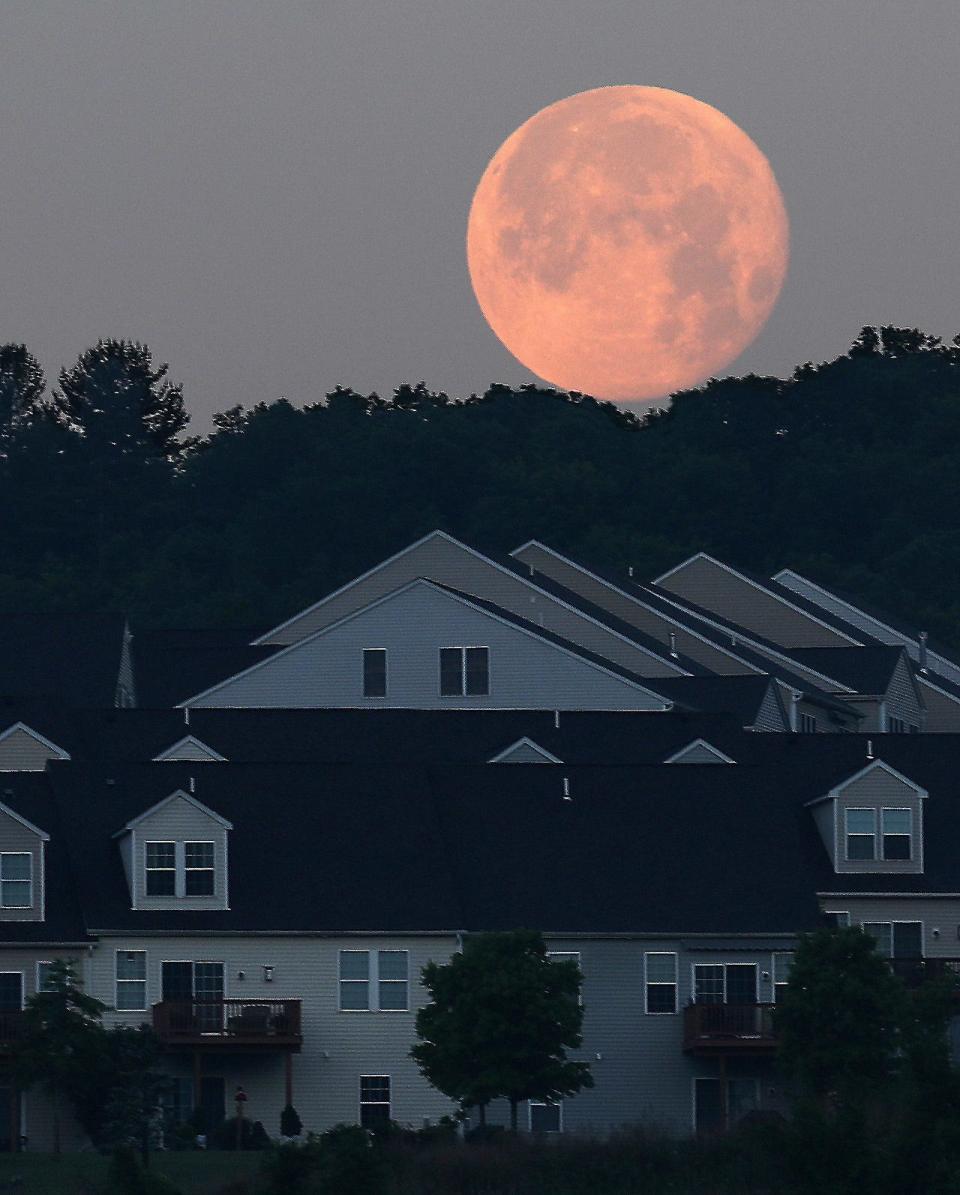A 'blood moon' total lunar eclipse is coming this weekend. How to best see it in OKC
A lunar eclipse is coming to the skies this weekend, and Oklahomans should have a fairly clear view of the spectacle Sunday night.
A "super flower blood moon," as this total lunar eclipse is called, will appear in the Sunday night sky across the U.S.
A lunar eclipse is what happens when the Earth moves between the full moon and the sun, causing a shadow across the surface of the rocky satellite.
USA TODAY: Here's what you need to know about the 'super flower blood moon'

When can I best see the 'blood moon' lunar eclipse in Oklahoma?
The best time for residents in the Oklahoma City area to view the "blood moon" is between 10:29 p.m. and 11:54 p.m. Sunday, according to TimeandDate.com. Maximum totality, when the moon is entirely covered in Earth's shadow, is expected at 11:11 p.m.
The phases of the eclipse will begin at 8:32 p.m. Sunday and end at 1:51 a.m. Monday, experts say.
"The moon will begin to look like it's darkening a little bit, but not significantly," said Kim Zoldak, a physics professor who runs Oklahoma State University's Mendenhall Observatory. "But when the moon is at the center of the earth's shadow will be obvious, because that's when it will appear the most red."
Unlike with solar eclipses — events where the moon moves in front of the sun — people won't need special glasses to protect their eyes while watching the lunar eclipse. Residents can feel free to simply look at the moon.
Why is the total lunar eclipse called a 'blood moon'?
As the eclipse occurs, the moon will only be receiving light peeking through Earth's atmosphere, which will change the color over time from gray and pink to orange and red.
"It's just like why our daytime skies are blue and the sunsets are red and orange," Zoldak said. "Blue light, which are shorter wavelengths of the spectrum that we can see with our eyes, actually scatters easier, and redder wavelengths do not. When the sun is on the horizon, the sunlight has more atmosphere to travel through, so all the shorter wavelengths get scattered out, so by the time the light reaches us, we're only left with the reds and oranges."
Despite being largely blocked by the Earth, some sunlight will still reach the moon, plunging it into a dark red, a color typically associated with blood.
USA TODAY: Blood moon, lunar eclipse take center stage in nighttime celestial array
The "blood moon" is also sometimes called the "super flower moon," because it occurs about the time of year when spring flowers traditionally begin to bloom and the moon is closest to the Earth.
Zoldak said Sunday, May 15, will be the first of two lunar eclipses this year, with the next one expected Nov. 8.
This article originally appeared on Oklahoman: How to view the 'blood moon' total lunar eclipse in OKC Sunday

